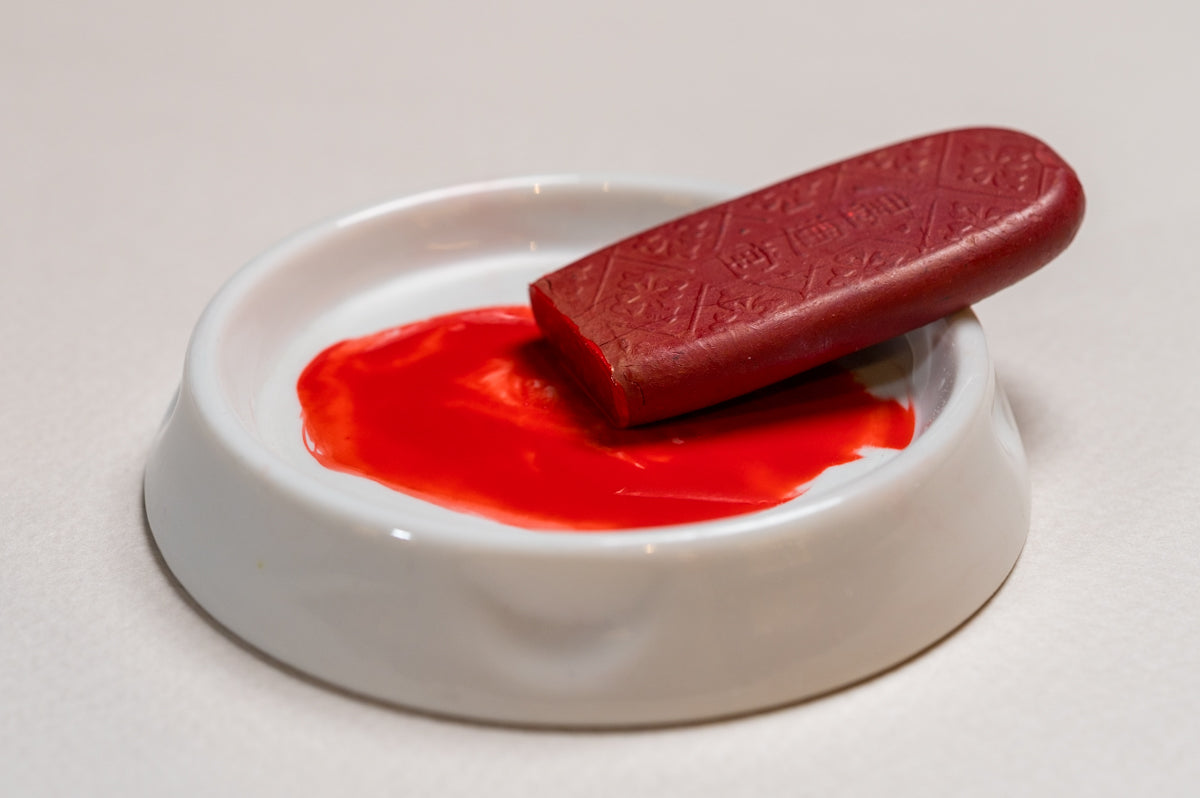PIGMENT TOKYO offers a wide range of colors with unique names, from the Gunjo (群青, Ultramarine blue) and Rokusho (緑青, Verdigris) that have been used in Oriental art since ancient times, to the synthetic pigments that were developed in Europe after the Industrial Revolution.

How many proper nouns for colors in Japan can you say out loud?
Whether it was dyes or pigments, people in ancient times were inspired by natural phenomena such as the changing seasons and gave these pigments various names.
For example, 臙脂色(cochineal) "read as Enji-iro in Japanese, or Yanzhi-se in Chinese," named after Mt.Yanzhi (燕支山), a major source of safflower in China;
浅葱色(light greenish-blue) "Asagi-iro," named for its resemblance to the color of scallion leaves; and 苅安色 (mustard color) "Kariyasu-iro," got its name from the dye that made of Kariyasu grass (Miscanthus Tinctorius).
Being able to touch and feel the colors created by our ancestors is quite a unique experience for us, especially living in a modern era where we are mostly exposed to colors through monitors and screens.
You can easily experience this Japanese color palette with your own eyes with these "Saiboku Aya", a series of colored inksticks created by Boku-Undo Co.(墨運堂).
When it comes to Sumi ink, most of you might think of black solid Sumi ink, but this product is a colored inkstick made of pigments and animal glue.
By grinding a colored inkstick on an inkstone slowly, unlike any acrylic emulsions or oil-based mediums, it produces a natural shade of color that can only be found by mixing pigments with an animal-based medium.

All I can say is the most attractive feature of Saiboku is its color.
Kei Iwaizumi, our art materials expert and a full-time lecturer in Nihonga (Japanese painting) course at Kyoto University of the Arts, also participated in the production and development of this ink, to perfectly present the "the colors of Japan", which are rich and magnificent yet hard to create.
Besides, all of our products are made with high-quality pigments, which have better light resistant than dyes.
As for the white inkstick, "Gofun", one of the traditional colors in Japanese painting, is used as the raw material, and by mixing this white inkstick with other colors you will be able to create pastel tones that ideally match the Japanese painting.

One of the charms of this product is the Japanese pattern created by the Sumi ink mold.
It can be not only for drawing uses but also as a gift or souvenir for your loved ones.

So how to use a Saiboku inkstick? It’s very simple, you can rub it just like a regular inkstick. However, if you use a black inkstone, it may be difficult to see the color, so I recommend you using a white ceramic inkstone.
PIGMENT TOKYO also offers “Saiboku Box Set - Limited Edition -” for you to enjoy the fun of these beautiful colored inksticks!

For more samples of each color, check out on PIGMENT TOKYO product details page.
We hope you will enjoy the beauty of traditional oriental colors created by the aesthetic sense of our art materials expert!
Translated by Atsumi Okano, Nelson Hor Ee Herng
PIGMENT TOKYO Art Materials Experts









